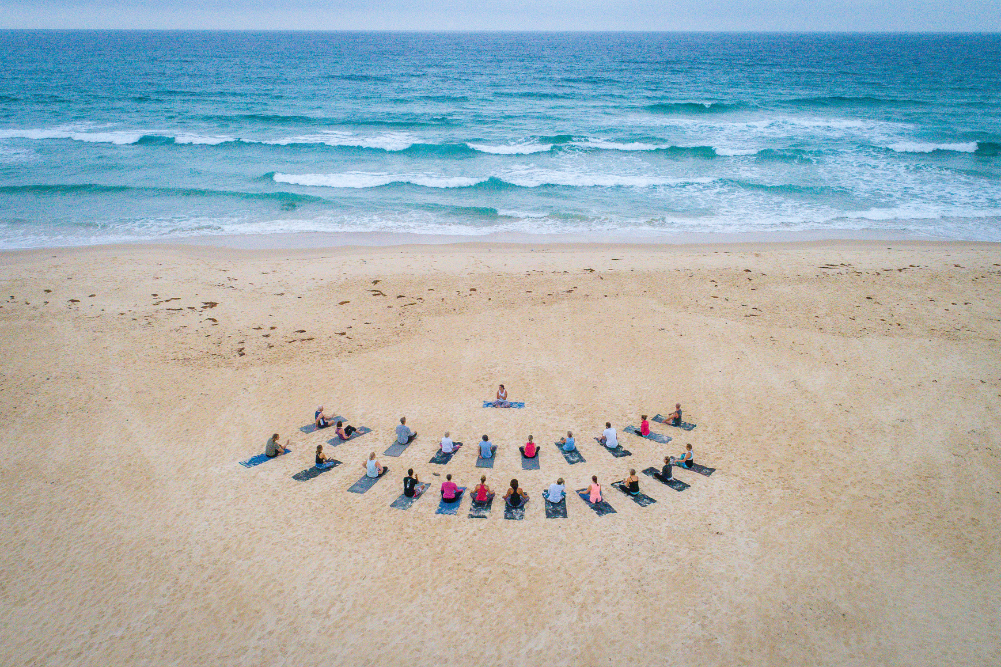Have a climb to remember in the Glass House Mountains
Nestled in the lush Sunshine Coast hinterland are the national heritage-listed Glass House Mountains, a series of striking jagged peaks rising up dramatically from the earth. They are remnants of eroded volcanoes from around 25 million years ago. The tallest is Mt Beerwah, at 556 metres above sea level.
The best way to discover this unique area is on foot. There are ample bushwalks and signed trails meandering around these monolithic peaks. Glass House Mountains Lookout, along the Glass House–Woodford road, offers the perfect vantage point to start your journey.
Just a couple of kilometres down the road, take the 3.3km circuit around the base of Mt Tibrogargan. This mountain is often called Monkey Face and if you look upwards the top section does resemble a giant gorilla.
The walk winds past casuarina groves and open eucalypt forests. It starts out with a steep incline, but after that it’s a reasonably easy walk. Along the way you’ll cross several ornate man-made stone bridges, surrounded by leafy emerald ferns and looking just like the little bridges in children’s fairytales. Close your eyes for a moment and you can almost imagine a troll peeping out from underneath.
The area does have a mystical, magical quality — and it’s little wonder. The Glass House Mountains is rich in history and colourful Aboriginal legend. Each of the mountains bears an Aboriginal name and the legend weaves an intricate tale about the “family†of mountains.
One son, Mt Coonowrin, has a craggy peak because the father, Mt Tibrogargan, struck him on the neck for failing to help the mother, Beerwah, escape the rising floodwaters. Tibrogargan’s tears at his son’s cowardice represent the many streams in the area that flow out to sea.
Captain James Cook was the first European to sight the mountains in 1770; he gave them their unique name because he said they resembled the glass furnaces of his native Yorkshire.
Get vertical
To experience an unforgettable outdoor adventure, strap on your hiking boots and climb to the summit of one of the mountains.
The gently sloping Mt Beerburrum (278m) is a fairly moderate climb but enough to get your heart pumping! The concrete track has a steep gradient. There are rock benches along the way, so take a break and check out the view. The climb takes you past rainforest plants including native ginger, cordylines and maidenhair ferns. Keep an eye out for a scarred hardwood tree that was struck by lightning: look carefully and you’ll see climbing notches cut into the tree centuries ago by Aborigines.
The track opens up and light spills through, making way for more native species such as brush boxes and native grass. At the summit you can sit on the ancient rocky outcrop where navigator Matthew Flinders stood two centuries ago. These days there’s a fire tower at the very top; climb it and you’ll see Moreton Island, Bribie Island and Pumicestone Passage, while to the west the D’Aguilar Range provides a breathtaking backdrop. To the summit and back is roughly a 1.4km walk, so allow one and a half hours return.
If you feel like a bit more of a challenge you can climb Mt Ngungun (253m); you’ll need a moderate level of fitness to tackle this two-kilometre return climb. It starts with a slow incline and takes you past scribbly gums (some still show traces of the wildfires that swept through the district in 1994). As you traverse the mountain, listen for the distinctive “wee law†cry of the yellow-tailed black cockatoo — flocks of birds fly through the area.
As you climb the stark, sheer-sided rock face you’ll pass a vast shallow cave, to be rewarded at the summit with a 360-degree view of all the jagged mountain peaks and below, a striking patchwork quilt of farmlets. Avocadoes, pineapples and macadamias are grown in the region.
A cautionary tale
To scale Mt Beerwah and Mt Tibrogargan (364m), the Environmental Protection Agency cautions high levels of physical fitness are required; some rock climbing and rock scrambling skills are recommended as well. Mt Coonowrin is now closed to the public because of dangers of rock falls.
Play it safe. Make sure you carry water, sunscreen and insect repellent, wear sturdy shoes and set off on your walk with ample time to return before nightfall. Local SES volunteers will attest to the scores of hapless climbers they’ve plucked off the mountains over the years who were not prepared.
To get there, take the Bruce Highway north from Brisbane, exit at Steve Irwin Way and follow the signs.







